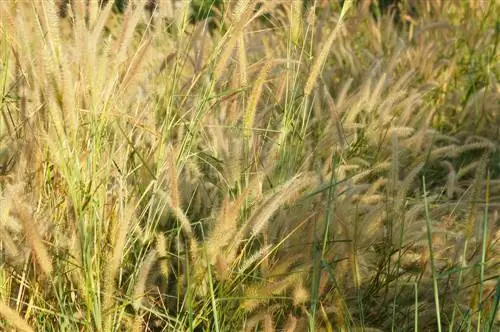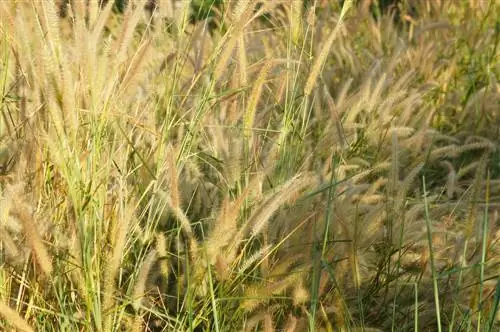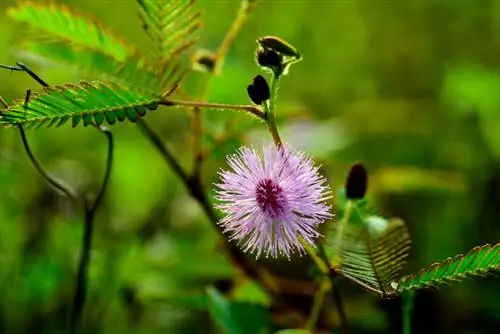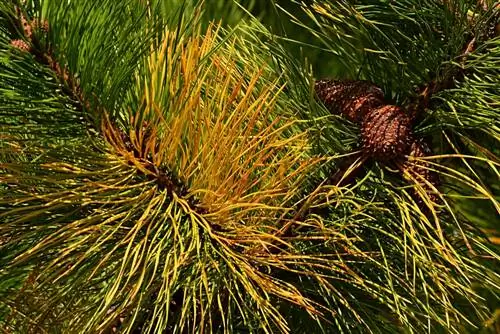- Author admin [email protected].
- Public 2023-12-16 16:46.
- Last modified 2025-01-23 11:22.
Pennisetum forms large clumps over the years and, depending on the variety, reaches a height of between 30 and 150 centimeters. The color of the stalks and leaves is usually bright green or purple. If the leaves turn yellow, this may have natural causes or be an alarm signal for care errors.

Why is my Pennisetum turning yellow and what can I do?
If Pennisetum grass turns yellow, it may be due to natural causes such as fall color, iron deficiency, inadequate irrigation or poor soil quality. Depending on the cause, watering, fertilizing or soil improvement can help.
Attractive autumn colors
Pennisetum grass is one of those ornamental grasses that change leaf color with the seasons. In autumn, the golden yellow stalks create beautiful accents.
Yellow leaves in the middle of summer
If only a few leaves change color during the main growing season, you don't have to worry because this is a natural process. You can simply cut out these parts of the plant with scissors.
However, if all the foliage turns yellow prematurely, this is a sign of a care error. Either you have watered the plant too rarely or the soil is too compacted.
Water enough
- Pennisetum grass in the pot always needs water when the top centimeters of the substrate feel dry.
- Pennisetum grass cultivated in the garden should also be watered as needed. Daily watering may be necessary in hot summers. Water preferably in the evening hours.
Poor soil quality
If the soil is too compacted and the water cannot drain away, this leads to root rot. The storage organs can no longer fulfill their task. Even if sufficient moisture is available, the leaves of Pennisetum initially turn yellow and then dry up.
If you dig up the Pennisetum grass, the roots are usually already dead, brown and muddy. If the entire root system is not yet infected, you can try to save the plant:
- Lifting Pennisetum out of the ground.
- Cut all infected root parts back to the he althy tissue.
- Loose the soil with sand and/or gravel before replanting.
- Ensure good water drainage with a drainage layer in the planting hole.
Chlorosis
If the leaves of the Pennisetum grass turn yellow before the start of autumn, there may be an iron deficiency. This element plays a central role in the molecular structure of the green plant pigment chlorophyll.
Regular fertilizer applications with a commercially available fertilizer for green plants (€6.00 on Amazon) can help. These preparations contain iron in the optimal amount for plants.
Tip
You can enhance the effect of the beautiful autumn colors by combining Pennisetum with evergreen or red-leaved plants. These colors make the golden yellow shine even more strongly.






